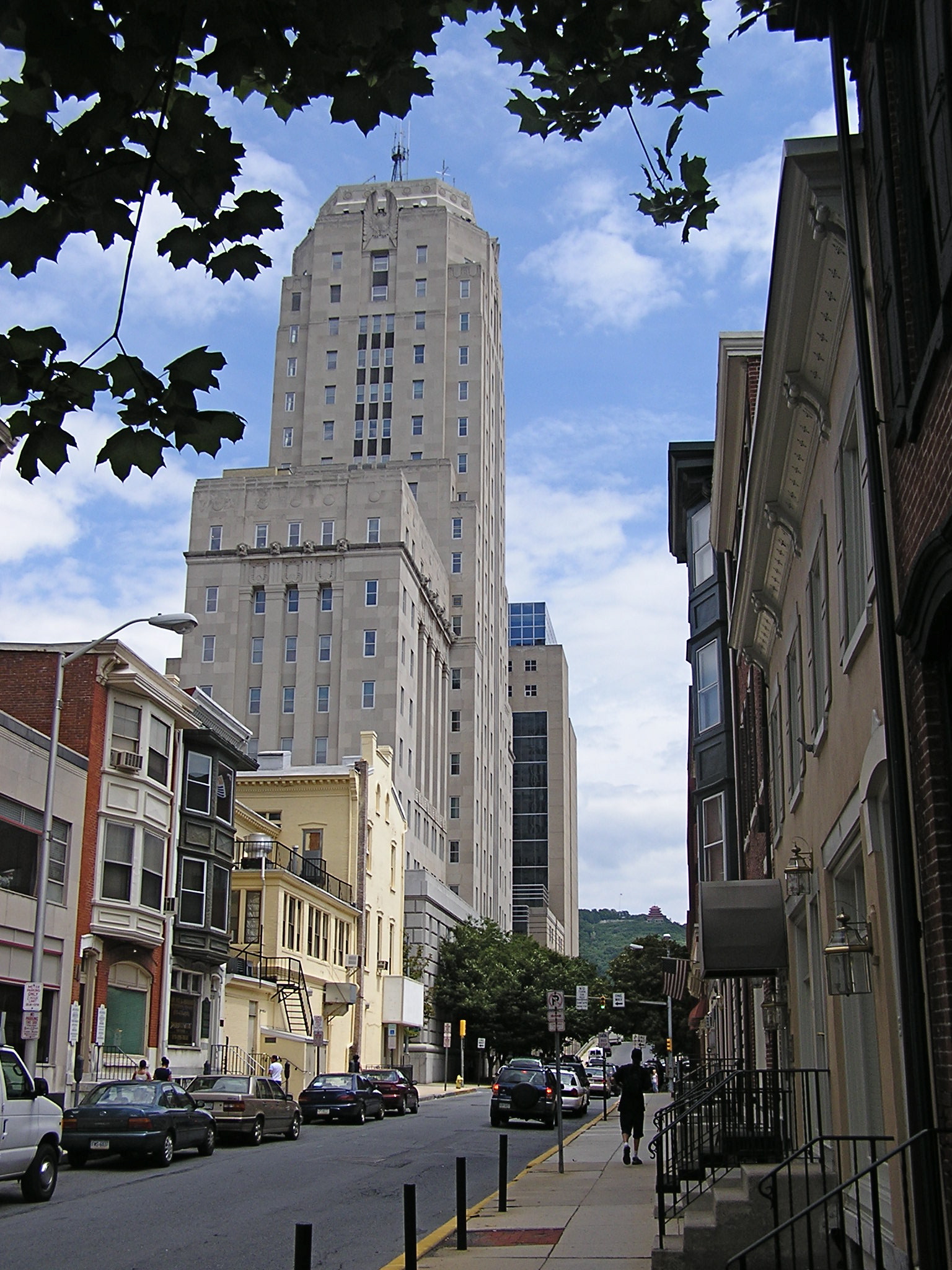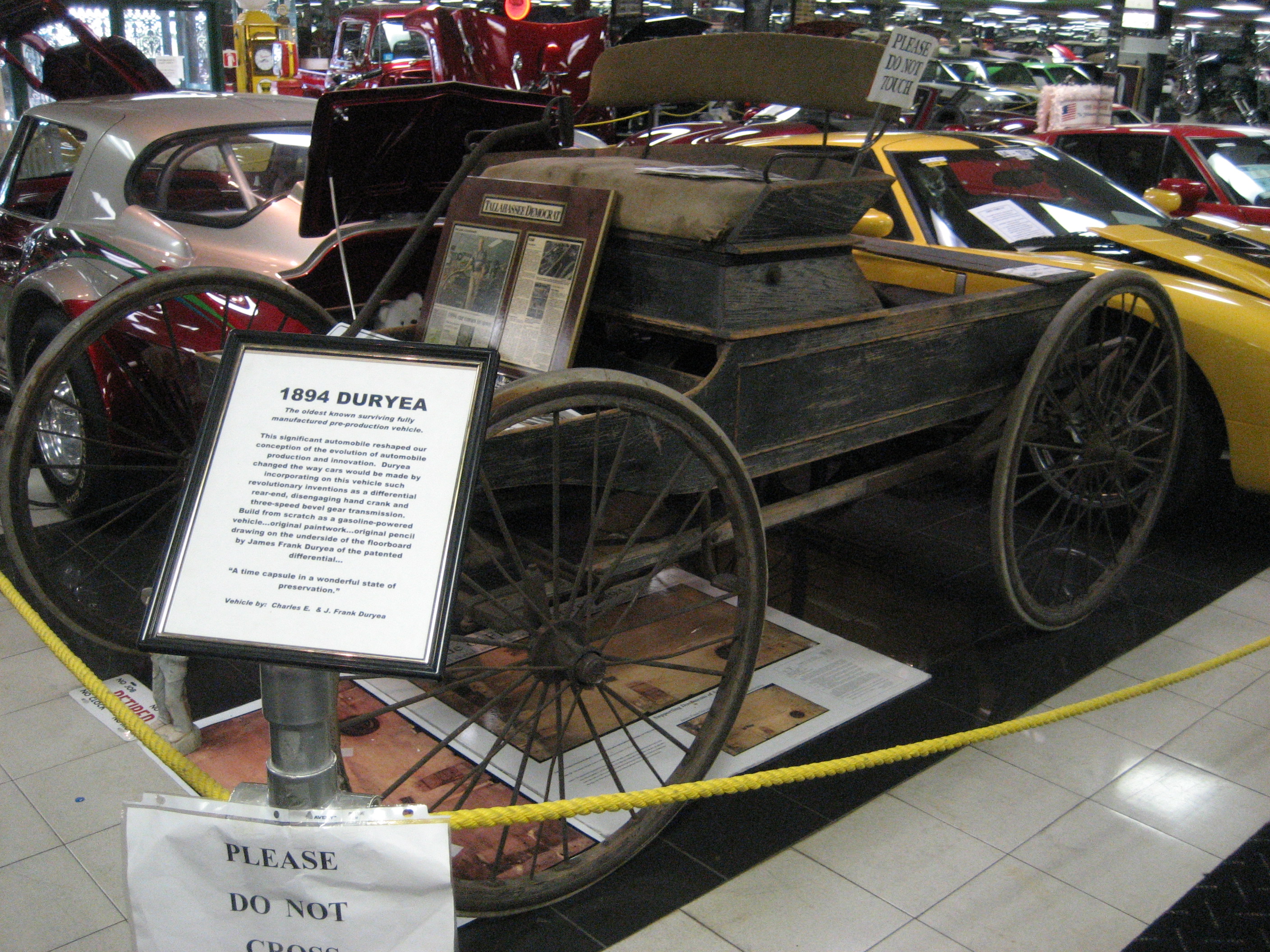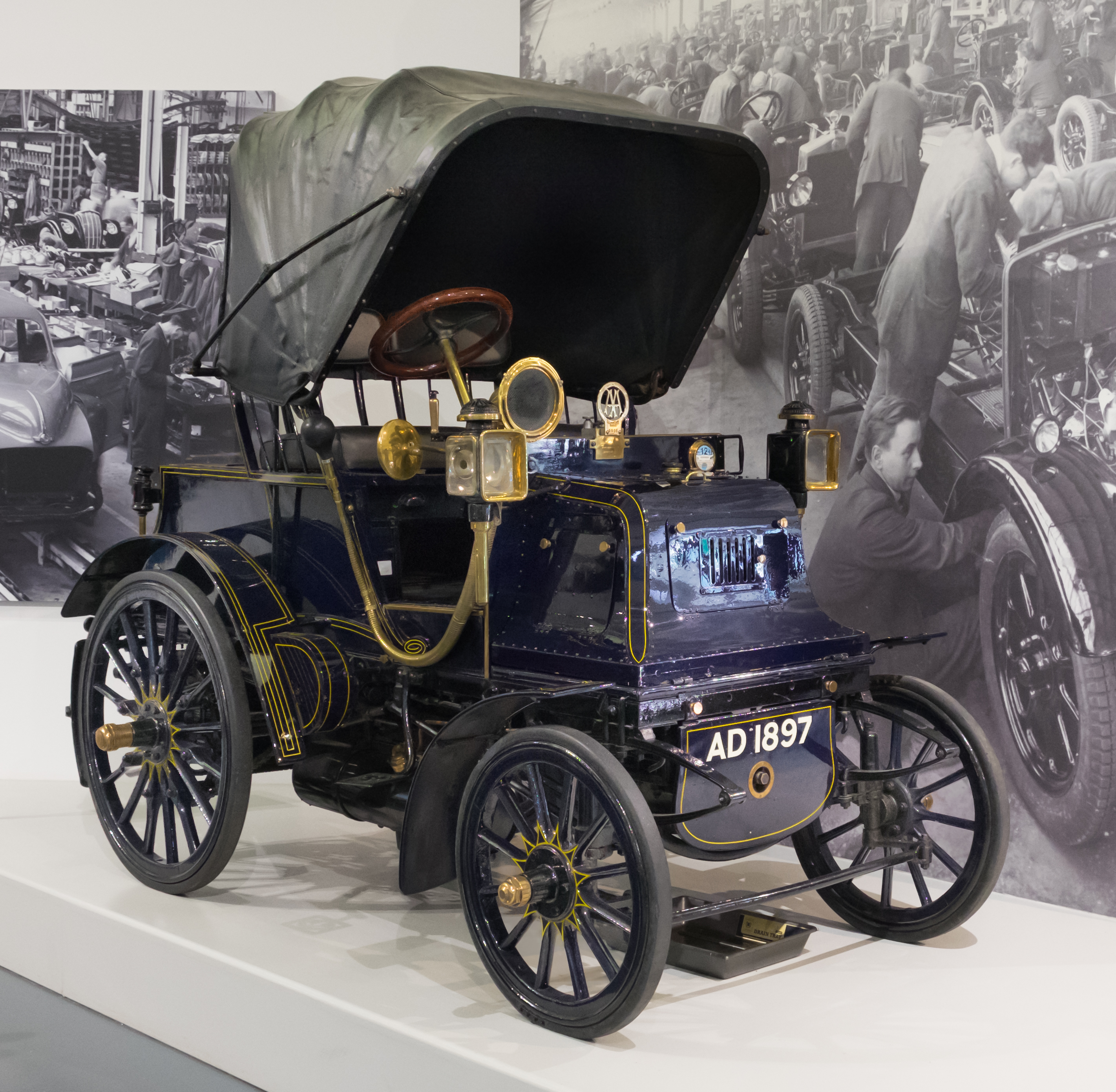|
Duryea Power
Duryea Power Company was a manufacturer of Brass Era automobiles in Reading, Pennsylvania. It was one of several similarly named companies that early automobile pioneer Charles Duryea was involved with. The 1904 ''Duryea Straight-Line Phaeton'' was a phaeton model. It could seat 2 passengers and sold for US$1350. The slant-mounted straight-3, situated amidships of the car, produced 12 hp (8.9 kW). The wood and iron-framed car weighed 950 lb (431 kg) and was noted for its high-speed capability. It had a 72" wheelbase. The 1904 ''Duryea Tonneau'' was a tonneau version and could seat 5 to 7 passengers. It sold for US$1750. The armored wood-framed car weighed 1350 lb (612 kg). It had a 3-cylinder, 12 hp engine, a 2-speed manual transmission, and a 95" wheelbase. See also * Duryea Motor Wagon Company * Duryea Motor Wagon * Stevens-Duryea * Charles Duryea * Frank Duryea James Frank Duryea (October 8, 1869 – February 15, 1967) and his brothe ... [...More Info...] [...Related Items...] OR: [Wikipedia] [Google] [Baidu] |
Brass Era Car
The Brass Era is an American term for the early period of automotive manufacturing, named for the prominent brass fittings used during this time for such things as lights and radiators. It is generally considered to encompass 1896 through 1915, a time when these vehicles were often referred to as horseless carriages. Elsewhere in the world, this period would be considered by antique car enthusiasts to consist of the veteran (pre-1904), and Edwardian eras, although these terms are really not meaningful outside the former British Empire. Overview Within the 20 years that make up this era, the various experimental designs and alternative power systems would be marginalised. Although the modern touring car had been invented earlier, until Panhard et Levassor's ''Système Panhard'' was widely licensed and adopted, recognisable and standardised automobiles had not been created. This system specified front-engined, rear-wheel drive, internal-combustion engined cars with a sliding ge ... [...More Info...] [...Related Items...] OR: [Wikipedia] [Google] [Baidu] |
Automobile
A car or automobile is a motor vehicle with Wheel, wheels. Most definitions of ''cars'' say that they run primarily on roads, Car seat, seat one to eight people, have four wheels, and mainly transport private transport#Personal transport, people instead of cargo, goods. The year 1886 is regarded as the birth year of the car, when German inventor Carl Benz patented his Benz Patent-Motorwagen. Cars became widely available during the 20th century. One of the first cars affordable by the masses was the 1908 Ford Model T, Model T, an American car manufactured by the Ford Motor Company. Cars were rapidly adopted in the US, where they replaced Draft animal, animal-drawn carriages and carts. In Europe and other parts of the world, demand for automobiles did not increase until after World War II. The car is considered an essential part of the Developed country, developed economy. Cars have controls for driving, parking, passenger comfort, and a variety of lights. Over the decades, a ... [...More Info...] [...Related Items...] OR: [Wikipedia] [Google] [Baidu] |
Reading, Pennsylvania
Reading ( ; Pennsylvania Dutch: ''Reddin'') is a city in and the county seat of Berks County, Pennsylvania, United States. The city had a population of 95,112 as of the 2020 census and is the fourth-largest city in Pennsylvania after Philadelphia, Pittsburgh, and Allentown. Reading is located in the southeastern part of the state and is the principal city of the Greater Reading Area, which had 420,152 residents as of 2020. Reading is part of the Delaware Valley, also known as the Philadelphia metropolitan area, a region that also includes Philadelphia, Upper Darby Township, Pennsylvania, Camden, and other suburban Philadelphia cities and regions. With a 2020 population of 6,228,601, the Delaware Valley is the seventh largest metropolitan region in the nation. Reading's name was drawn from the now-defunct Reading Company, widely known as the Reading Railroad and since acquired by Conrail, that played a vital role in transporting anthracite coal from the Pennsylvania's ... [...More Info...] [...Related Items...] OR: [Wikipedia] [Google] [Baidu] |
Charles Duryea
Charles Edgar Duryea (December 15, 1861 – September 28, 1938) was an American engineer. He was the engineer of the first-ever working American gasoline-powered car and co-founder of Duryea Motor Wagon Company. He was born near Canton, Illinois, a son of George Washington Duryea and Louisa Melvina Turner, and died in Philadelphia, Pennsylvania, but spent most of his life working in Springfield, Massachusetts. It was in Springfield that Charles and his brother, Frank, produced and road-tested America’s first gasoline-powered car. Biography Charles Duryea was born on December 15, 1861, near Canton, Illinois, to George Washington Duryea and Louisa Melvina Turner. Duryea and his brother Frank (1869–1967) were initially bicycle makers in Washington, D.C., but later became world-renowned as the first American gasoline-powered car manufacturers, headquartered in Springfield, Massachusetts. Generally speaking, Charles engineered the automobiles, while Frank built, tested ... [...More Info...] [...Related Items...] OR: [Wikipedia] [Google] [Baidu] |
Phaeton Body
A phaeton is a style of open automobile without any fixed weather protection, which was popular from the 1900s until the 1930s. It is an automotive equivalent of the horse-drawn fast, lightweight phaeton carriage. A popular style in the US from the mid–1920s and continuing into the first half of the 1930s was the dual cowl phaeton, with a cowl separating the rear passengers from the driver and front passenger. Phaetons fell from favour when closed cars and convertible body styles became widely available during the 1930s. Eventually, the term "phaeton" became so widely and loosely applied that almost any vehicle with two axles and a row or rows of seats across the body could be called a phaeton. Convertibles and pillarless hardtops were sometimes marketed as "phaetons" after actual phaetons were phased out. History The term ''phaeton'' had historically described a light, open four-wheeled carriage. When automobiles arrived it was applied to a light two-seater with minim ... [...More Info...] [...Related Items...] OR: [Wikipedia] [Google] [Baidu] |
Straight-3
A straight-three engine (also called an inline-triple or inline-three) is a three-cylinder piston engine where cylinders are arranged in a line along a common crankshaft. Less common than straight-four engines, straight-three engines have nonetheless been used in various motorcycles, cars and agricultural machinery. Design A crankshaft angle of 120 degrees is typically used by straight-three engines, since this results in an evenly spaced firing interval. Another benefit of this configuration is perfect primary balance and secondary balance, however an end-to-end rocking couple is induced because there is no symmetry in the piston velocities about the middle piston. A balance shaft is sometimes used to reduce the vibrations caused by the rocking couple. Other crankshaft angles have been used occasionally. The 1976-1981 Laverda Jota motorcycle used a 180 degree crankshaft, where the outer pistons rise and fall together and inner cylinder is offset from them by 180 degrees. T ... [...More Info...] [...Related Items...] OR: [Wikipedia] [Google] [Baidu] |
Tonneau
A tonneau ( or ) is an area of a car or truck open at the top. It can be for passengers or cargo. A tonneau cover in current automotive terminology is a hard or soft cover that spans the back of a pickup truck to protect the load or to improve aerodynamics. Tonneau covers come in many styles that fold, retract, or tilt open, and can be locked shut. Common materials used include steel, aluminium, canvas, PVC, fibreglass, and carbon fibre. Tonneau covers are also used to cover and protect open areas of boats. Many of these covers are made of waterproofed canvas and are held in place by snaps. The older, original tonneau covers were used to protect unoccupied passenger seats in convertibles and roadsters, and the cargo bed of a pickup truck or coupé utility. Hard tonneau covers open by a hinging or folding mechanism while segmented or soft covers open by rolling up or folding. Truck and car tonneau covers keep items out of the sun and out of the sight of potential thieves. Or ... [...More Info...] [...Related Items...] OR: [Wikipedia] [Google] [Baidu] |
Duryea Motor Wagon Company
The Duryea Motor Wagon Company, established in 1895 in Springfield, Massachusetts, was the first American firm to build gasoline automobiles. History Founded by Charles Duryea and his brother Frank, the company built the Duryea Motor Wagon, a one-cylinder four horsepower car, first demonstrated on September 21, 1893, in Springfield, Massachusetts, on Taylor Street in Metro Center. It is considered the first successful gas-engine vehicle built in the U.S. In 1895, a second Duryea (built in 1894), driven by Frank, won the ''Chicago Times Herald'' race in Chicago on a snowy Thanksgiving day. He traveled 54 miles (87 km) at an average 7.5 mph (12 km/h), marking the first U.S. auto race in which any entrants finished. That same year, the brothers began commercial production, with thirteen cars sold by the end of 1896. Their first ten production vehicles were the first automobiles sold in the United States. Banking on the idea that future racing successes would propel t ... [...More Info...] [...Related Items...] OR: [Wikipedia] [Google] [Baidu] |
Duryea Motor Wagon
The Duryea Motor Wagon was among the first standardized automobiles and among the first powered by gasoline. Fifteen examples were built by the Duryea Motor Wagon Company of Chicopee, Massachusetts, between 1893 and 1896. Their enterprise followed the first commercially available automobile which was patented by Karl Benz on January 29, 1886, and put into production in 1888. To construct the first Duryea Motor Wagon, the brothers had purchased a used horse-drawn buggy for $70 and then installed a , single cylinder gasoline engine. The car had a friction transmission, spray carburetor, and low tension ignition. It was road-tested again on 10 November, when the newspaper '' The Springfield Republican'' made the announcement. The car was put into storage in 1894 and stayed there until 1920 when it was rescued by Inglis M. Uppercu and presented to the United States National Museum. The Duryea Motor Wagon remained in production until 1917. The Duryea brothers entered their horseless ... [...More Info...] [...Related Items...] OR: [Wikipedia] [Google] [Baidu] |
Stevens-Duryea
Stevens-Duryea was an American manufacturer of Veteran and Brass Era automobiles in Chicopee Falls, Massachusetts, between 1901 and 1915 and Vintage Cars from 1919 to 1927. The company was founded by J. Frank Duryea and J. Stevens Arms and Tool Company, in 1901 to build cars to Frank Duryea's design. First appearing as a two-cylinder runabout, the cars entered the luxury market with four-cylinder engines and pioneered the development of six-cylinder cars. Known for quality and craftsmanship, the company voluntarily closed in 1915 during a weak economic market. The rights and engineering for the Stevens-Duryea were acquired by a new company in 1919 and resumed car production on a limited scale until 1927. History Hampden Automobile & Launch Company After departing from the Duryea Motor Wagon Company in July 1898, J. Frank Duryea was hired to build a car for the American Automobile Company of New York. When this company appeared to be more interested in stock promotion th ... [...More Info...] [...Related Items...] OR: [Wikipedia] [Google] [Baidu] |
Frank Duryea
James Frank Duryea (October 8, 1869 – February 15, 1967) and his brother Charles (1861–1938) invented the first gasoline-powered automobile in America. Biography The brothers were born in Illinois, Charles in Canton, Illinois, in 1861 and Frank in Wyoming, Illinois, in 1869. Both graduated from high school. Charles moved to Washington, D.C., to work in the bicycle business. Frank followed closely on his heels in 1888. Two more moves in as many years brought the Duryea brothers to Springfield, Massachusetts. Charles had already earned a reputation for unusual design elements in his "sylph" bicycle, with a smaller wheel in front and a steering lever on the sides of the seat. Said one colleague, "Charles, it's a freak." The two brothers researched the internal combustion engine at the Springfield public library. Charles drew the designs and made the connection with their chief investor, Erwin Markham. Markham provided $1,000, which paid for space in an old machine shop, a ... [...More Info...] [...Related Items...] OR: [Wikipedia] [Google] [Baidu] |
Brass Era Vehicles
Brass is an alloy of copper (Cu) and zinc (Zn), in proportions which can be varied to achieve different mechanical, electrical, and chemical properties. It is a substitutional alloy: atoms of the two constituents may replace each other within the same crystal structure. Brass is similar to bronze, another copper alloy, that uses tin instead of zinc. Both bronze and brass may include small proportions of a range of other elements including arsenic (As), lead (Pb), phosphorus (P), aluminium (Al), manganese (Mn), and silicon (Si). Historically, the distinction between the two alloys has been less consistent and clear, and modern practice in museums and archaeology increasingly avoids both terms for historical objects in favor of the more general "copper alloy". Brass has long been a popular material for decoration due to its bright, gold-like appearance; being used for drawer pulls and doorknobs. It has also been widely used to make utensils because of its low melting ... [...More Info...] [...Related Items...] OR: [Wikipedia] [Google] [Baidu] |








